1. Overview
Pyotr Arkadyevich Stolypin served as the third prime minister and interior minister of the Russian Empire from 1906 until his assassination in 1911. During a period of significant social unrest and political upheaval following the Russian Revolution of 1905, Stolypin was a dominant figure, known for his dual approach of harsh suppression of revolutionary movements alongside comprehensive, though controversial, agrarian and administrative reforms. He aimed to strengthen the monarchy by modernizing the rural Russian economy and fostering a stable class of landowning peasants, rather than pursuing democratic ideals. While his policies initiated unprecedented economic growth, particularly in agriculture, they were also marked by severe crackdowns on civil liberties and dissent. His complex legacy, often praised for his strategic vision and administrative prowess by his admirers, is critically viewed for the authoritarian nature of his methods and the incomplete realization of his reforms, which were cut short by his assassination.
2. Early Life and Background
Pyotr Stolypin was born into a prominent Russian aristocratic family, with his forebears having served the tsars since the 16th century, accumulating vast estates across several provinces as a reward for their service. The poet Mikhail Lermontov was a paternal relative.
2.1. Birth and Family
Stolypin was born on April 14, 1862 (April 2 O.S.), in Dresden, then part of the Kingdom of Saxony. He was baptized in the Russian Orthodox Church in Dresden on May 24 of the same year. His father, Arkady Dmitrievich Stolypin (1821-1899), was a Russian envoy, a general in the Russian artillery, the governor of Eastern Rumelia, and commandant of the Kremlin Palace guard. His mother, Natalia Mikhailovna Stolypina (born Gorchakova; 1827-1889), was the daughter of Prince Mikhail Dmitrievich Gorchakov, who served as the commanding general of the Russian infantry during the Crimean War and later as the viceroy of Congress Poland.
2.2. Education
Pyotr Stolypin grew up on the family estate Serednikovo (СередниковоRussian), located in Solnechnogorsky District, near Moscow Governorate, a place once inhabited by Mikhail Lermontov. In 1879, his family relocated to Oryol. Stolypin and his brother Aleksandr attended the Oryol Boys College, where his teacher, B. Fedorova, described him as "standing out among his peers for his rationalism and character." In 1881, he enrolled at St. Petersburg University to study agriculture, where one of his notable teachers was Dmitri Mendeleev, the renowned chemist. After graduating in 1885, he entered government service, having written his thesis on tobacco cultivation in southern Russia. The specific ministry he joined, whether the Ministry of State Property or Internal Affairs, remains unclear.
3. Early Career and Local Administration
Stolypin's career in public service began in 1884, marking his entry into the Russian Imperial Ministry of Interior as a civil servant. His early appointments and experiences in provincial administration allowed him to hone his administrative skills, which would prove crucial in his later roles.
3.1. Entry into Public Service and Service in Lithuania
Much of Stolypin's early life and career was spent in Lithuania, then known administratively as the Northwestern Krai of the Russian Empire. From 1869, he spent his childhood years at the Kalnaberžė manor, built by his father in what is now the Kėdainiai district of Lithuania, which remained his cherished residence throughout his life. In 1876, the Stolypin family moved to Vilna, where he attended grammar school.
In 1884, while still a student, Stolypin married Olga Borisovna von Neidhart, whose family held a social standing similar to his own. Their marriage began under tragic circumstances, as Olga had initially been engaged to Stolypin's brother, Mikhail, who died in a duel. Despite this, their marriage was described as happy and scandal-free. They had five daughters and one son, Arkady. Four of their daughters were born during his service in Kovno.
From 1889 to 1902, Stolypin served as the marshal of the Kovno Governorate (now Kaunas, Lithuania). This public service provided him with direct insight into local needs and enabled him to develop significant administrative abilities. His experiences in Kovno, particularly observing the single-family farmstead system of the Northwestern Krai, heavily influenced his later ideas on land reform, as he sought to introduce similar private ownership principles across the Russian Empire. His tenure in Kovno was considered highly successful by the Russian government, leading to seven promotions and culminating in his elevation to the rank of state councilor in 1901. In May 1902, Stolypin was appointed governor of Grodno Governorate, becoming the youngest person ever to hold that position.
3.2. Governor of Saratov
In February 1903, Stolypin became the governor of Saratov, a province known for its impoverished and rebellious peasantry. His tenure here gained him a reputation for effective governance, particularly for his methods in suppressing strikes and peasant unrest, especially during January 1905 amidst the Russian Revolution of 1905. He was noted for cooperating with the zemstvos, the local government bodies. Stolypin was distinguished as the only governor who managed to maintain a firm grip on his province during this period of widespread revolt. The roots of the unrest in Saratov partly lay in the Emancipation Reform of 1861, which had granted land to the collective peasant communes rather than directly to the newly freed serfs. Stolypin was the first governor to employ effective police methods, with some sources suggesting he maintained police records on every adult male in his province.
4. Service as Interior Minister and Prime Minister
Stolypin's successful track record as a provincial governor, particularly his decisive handling of unrest, led to his rapid ascension within the imperial government.
4.1. Appointment as Interior Minister and Prime Ministership
In April 1906, Stolypin was appointed Interior Minister under Prime Minister Ivan Goremykin. During this time, he advocated for the construction of a new track for the Trans-Siberian Railway along the Russian side of the Amur River. Goremykin, described by his predecessor Sergei Witte as a bureaucratic nonentity, resigned on July 21, 1906. Tsar Nicholas II subsequently appointed Stolypin as Prime Minister, allowing him to retain his position as Interior Minister.
Upon becoming prime minister, Stolypin took decisive actions regarding the Duma. To facilitate cooperation with the new government, he dissolved the First Duma, despite opposition from some of its more radical members. In response, 120 Kadet and 80 Trudovik and Social Democrat deputies traveled to Vyborg (then part of the autonomous Grand Duchy of Finland, beyond the reach of Russian police) and issued the Vyborg Manifesto, advocating for civil disobedience. Stolypin, however, allowed the signatories to return to the capital unmolested.
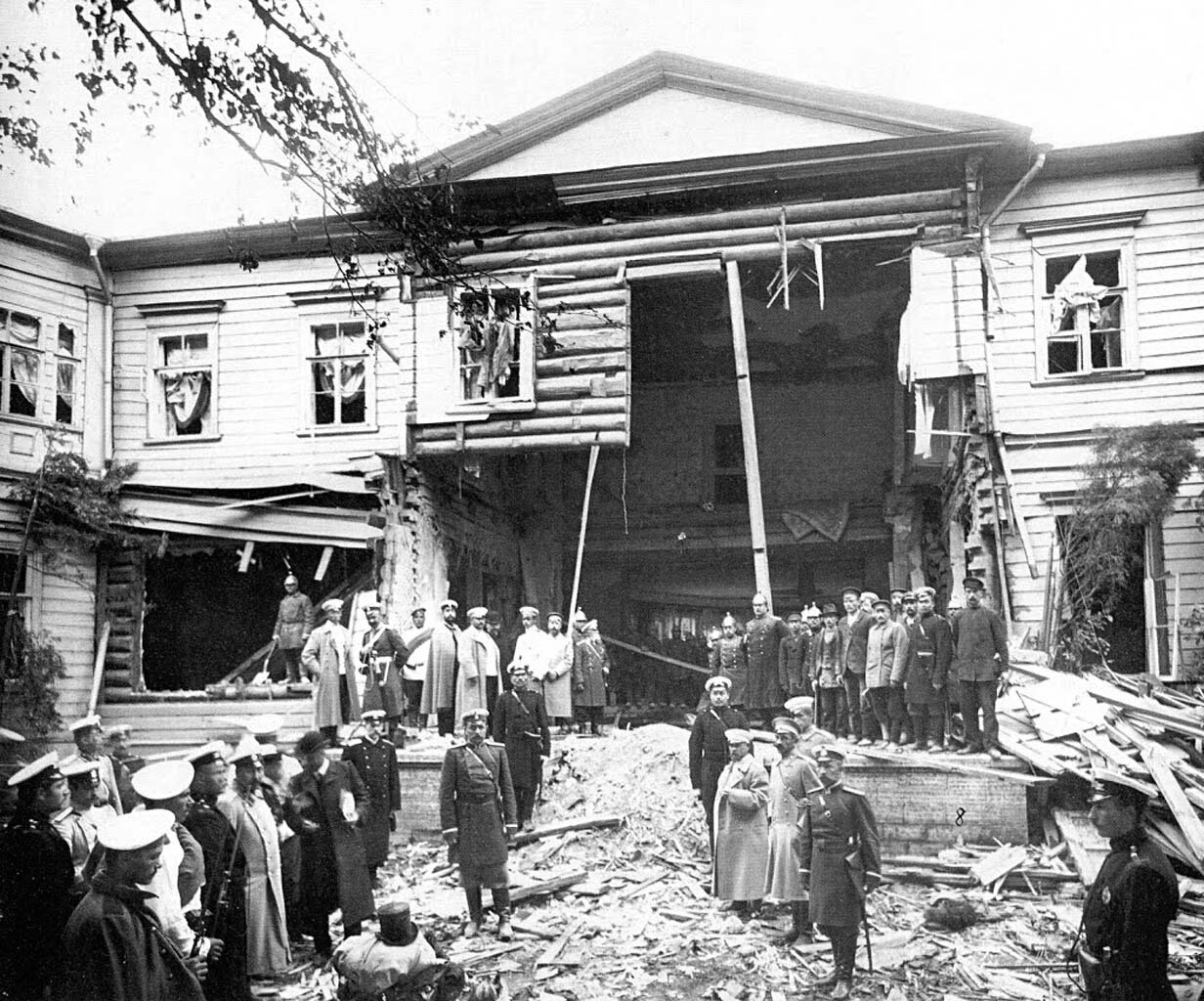
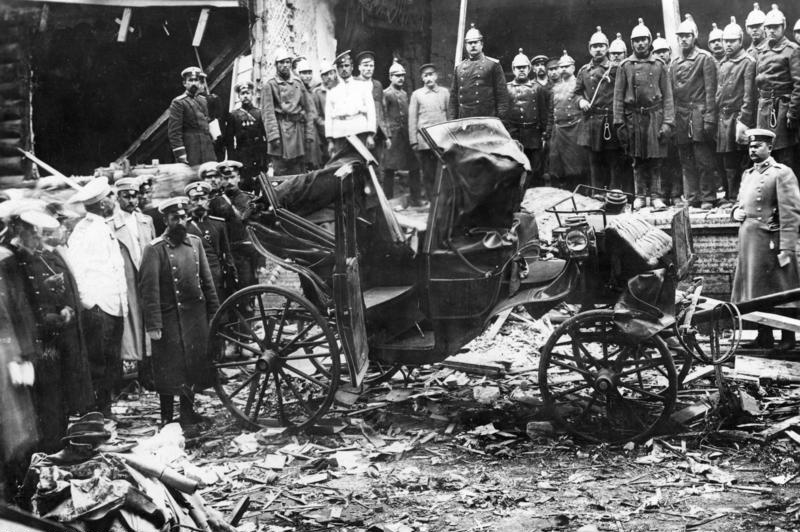
Stolypin's hardline stance against revolutionaries made him a target. On August 25, 1906, three assassins from the Union of Socialists-Revolutionaries Maximalists, disguised in military uniforms, bombed a public reception he was holding at his dacha on Aptekarsky Island. While Stolypin himself suffered only minor injuries from flying splinters, the attack killed 28 other people. Tragically, his 15-year-old daughter lost both legs and later died from her injuries, and his 3-year-old son Arkady broke a leg, as they stood on a balcony during the explosion. Following this attack, Stolypin moved into the Winter Palace. In October 1906, at the Tsar's request, Grigori Rasputin visited the wounded child.
Stolypin sought to make the Duma more amenable to government proposals. He changed the rules for the First Duma's operation and, on June 8, 1907, he dissolved the Second Duma. Simultaneously, 15 Kadet deputies suspected of ties to terrorists were arrested. He also implemented changes to the electoral law, significantly increasing the weight of votes for the nobility and the wealthy, while reducing the value of votes from lower classes. This move, often referred to as the "June 3rd Coup," effectively curtailed the democratic aspirations of the First Russian Revolution. As a result, the elections for the Third Duma returned a much more conservative body, more inclined to cooperate with the government. This shift even transformed moderate liberals like Georgy Lvov into more radical figures.
5. Major Reforms and Governance
Stolypin's governing philosophy, encapsulated by his motto, "First peace, then reform," involved a dual strategy of suppressing revolutionary activities while simultaneously implementing sweeping reforms aimed at modernizing Russia and consolidating the tsarist regime.
5.1. Agrarian Reform (Stolypin Reform)
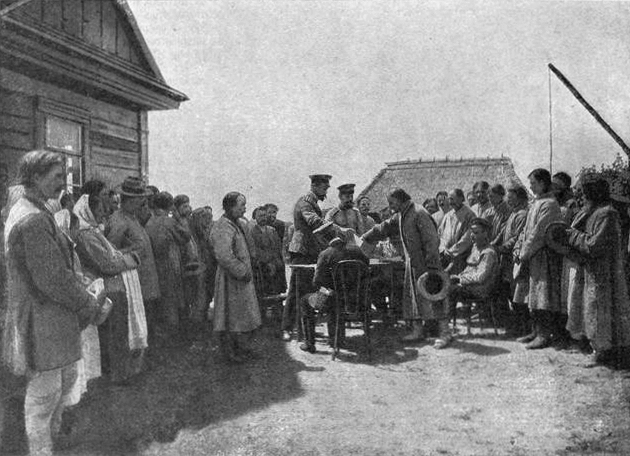
As governor in Saratov, Stolypin had become convinced that the traditional open field system and communal land tenure (the Mir (commune)) were obstacles to progress and sources of peasant unrest. Consequently, their dissolution and the individualization of peasant land ownership became the primary objectives of his agrarian policy, famously known as the Stolypin reform. He aimed to create a class of market-oriented smallholders, referred to as kulaks, who would have a vested interest in the existing social order and thus serve as a bulwark against revolutionary sentiment.
Stolypin proposed his landlord-sided reform as an alternative to previous democratic land proposals, which had contributed to the dissolution of the first two Dumas. His efforts were supported by Alexander Krivoshein, who became Minister of Agriculture in 1908. To facilitate the reforms, the Peasants' Land Bank and credit cooperatives expanded significantly from 1908, coinciding with a booming period for Russian industry. The reforms involved allowing peasants to freely withdraw from the Mir, confirming their individual land ownership rights, and establishing individual farms known as khutors and otrups (forms of land consolidation). However, these policies often met resistance from peasants who preferred the security of the communal system.
Although the reforms were ambitious, their full success was hampered by various factors. The deep conservatism of the peasantry made them slow to adopt the new systems. By 1914, the traditional strip system remained widespread, with only about 10% of the land having been consolidated into individual farms. Many peasants were reluctant to abandon the perceived security of the commune for the uncertainties of individual farming. Furthermore, by 1913, the government's own Ministry of Agriculture began to lose confidence in the policy. Despite these limitations, Stolypin's reforms did produce notable economic results: between 1906 and 1915, crop productivity nationwide grew by 14 percent, and by 25 percent in Siberia. By 1912, Russia's grain exports impressively exceeded those of Argentina, the United States, and Canada combined by 30 percent.
5.2. Political Stabilization and Social Control
In response to the escalating revolutionary unrest and widespread assassinations of police officials and bureaucrats across Russia, Stolypin implemented stringent policies aimed at political stabilization and social control. He introduced a new court system based on martial law, which allowed for the swift arrest, speedy trial, and execution of accused offenders. Between 1906 and 1909, over 3,000, and possibly as many as 5,500, suspects were convicted and executed by these special courts. These harsh measures earned the gallows the grim nickname "Stolypin's efficient black Monday necktie," a term coined by Kadet party member Fedor Rodichev in a Duma session on November 17, 1907. Outraged, Stolypin challenged Rodichev to a duel, which Rodichev averted by apologizing, but the expression became widely known. The capacious railroad cars used for the resettlement of peasants to Siberia were also colloquially named "Stolypin cars." These methods highlight Stolypin's commitment to order, but also his willingness to suppress civil liberties to achieve it.
5.3. Other Reform Policies
Beyond agrarian reform, Stolypin pursued a broader agenda of modernization within the Tsarist regime. He sought to improve the living conditions of urban laborers, though his efforts were often met with resistance. He also aimed to increase the power of local governments (zemstvos) and modernize local administration, including reforms to the judiciary and reorganization of provincial self-governing bodies. However, the zemstvos frequently adopted an attitude hostile to the central government.
Stolypin also addressed the "Jewish Question" in Russia, setting a notable example for his contemporaries. He petitioned the Tsar to dissolve the Pale of Settlement, visited synagogues, and even invited Jewish musicians to his home to perform for his family. In 1910, Stolypin's brother-in-law Sergey Sazonov became Minister of Foreign Affairs. Around this time, Stolypin attempted to curb the influence of Grigori Rasputin, who was facing press accusations of improper sexual relations. Stolypin aimed to ban Rasputin from the capital and threatened to prosecute him as a sectarian; Rasputin subsequently left for Jerusalem, returning to St. Petersburg only after Stolypin's death.
Stolypin's broader vision was articulated in his famous quote, "You need great upheavals. We need a great nation." This reflects his belief that stability and national strength were prerequisites for any meaningful societal transformation. In June 1910, his comprehensive land reforms were formally presented to the Duma as a law, which also included a proposal to extend the zemstvo system to the southwestern provinces of Asian Russia. Despite the seeming likelihood of its passage, Stolypin's political opponents narrowly defeated it. In March 1911, Stolypin resigned from the increasingly fractious and chaotic Duma after the failure of his land-reform bill, leading Tsar Nicholas II to consider potential successors such as Sergei Witte, Vladimir Kokovtsov, and Alexei Khvostov.
6. Assassination and Death
Despite numerous police warnings regarding assassination plots-there had already been at least 10 attempts on his life-Stolypin traveled to Kyiv. On September 14, 1911 (September 1 O.S.), he attended a performance of Rimsky-Korsakov's opera The Tale of Tsar Saltan at the Kiev Opera. Tsar Nicholas II and his eldest daughters, Grand Duchesses Olga and Tatiana, were also in attendance. The theater was heavily guarded by 90 men inside the building.
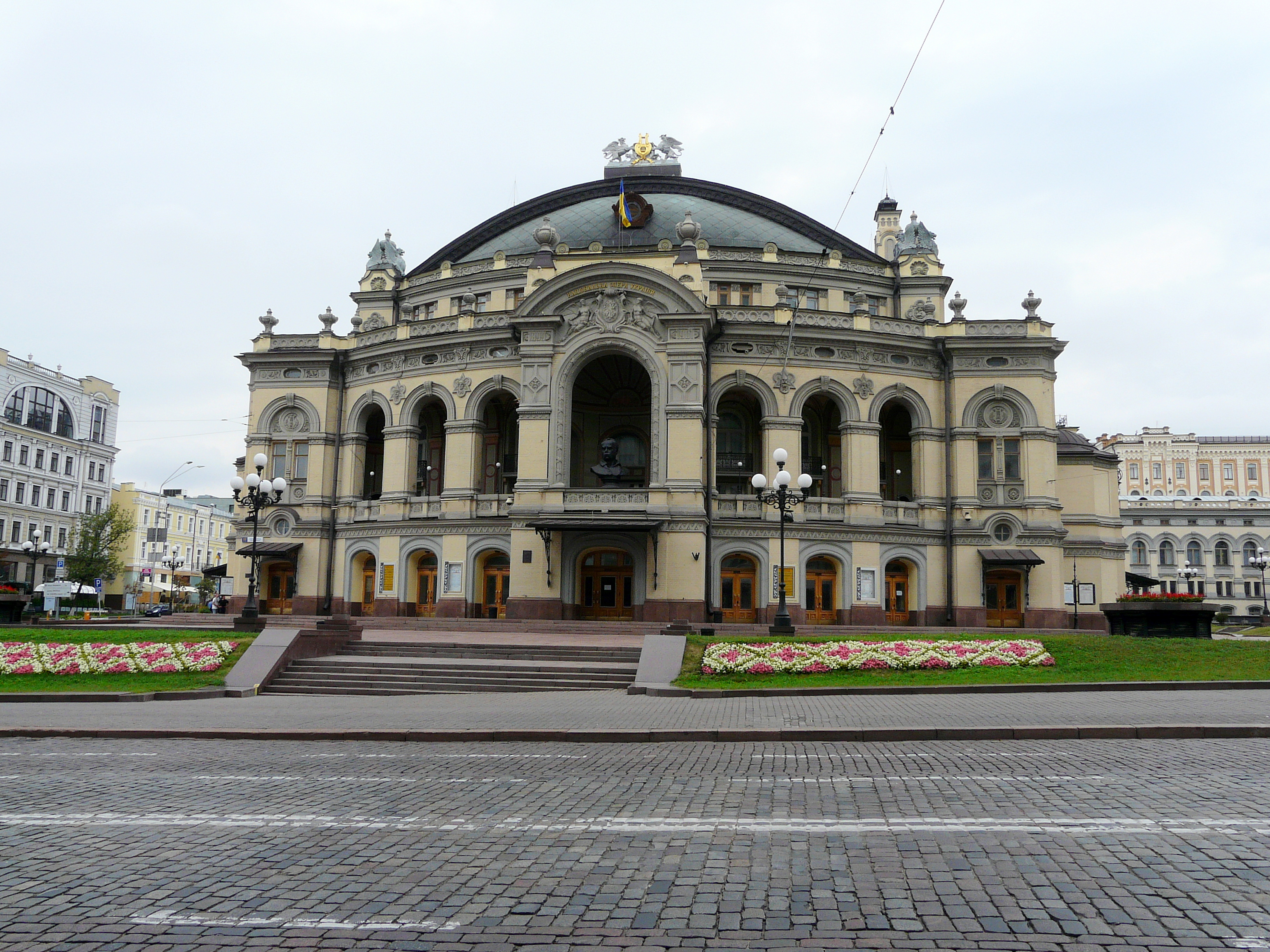
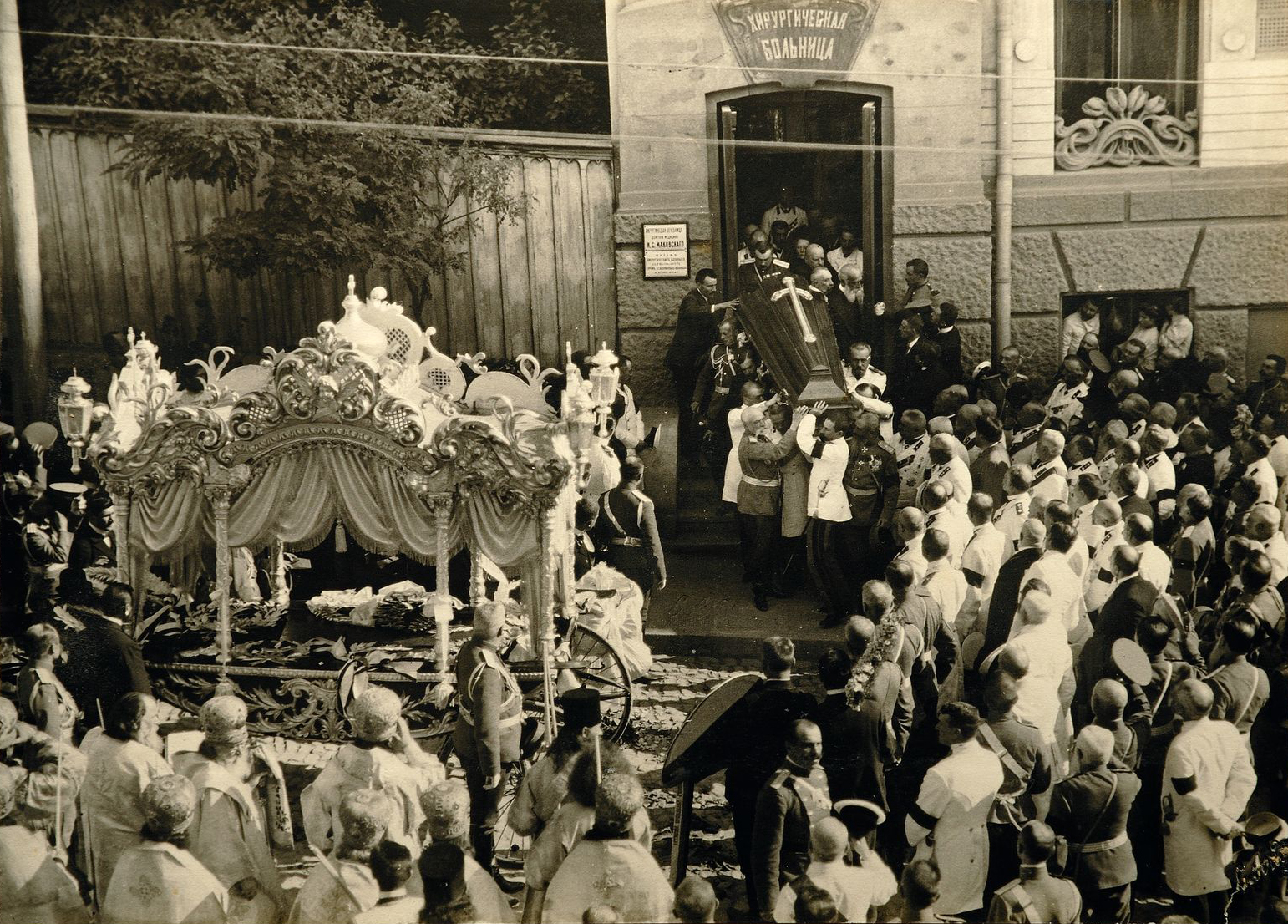
During the second act, Stolypin was standing in front of the ramp separating the parterre from the orchestra, with his back to the stage. His personal bodyguard had briefly stepped out. He was approached by Dmitry Bogrov, a Jewish leftist revolutionary who also reportedly worked as a police spy. Bogrov shot Stolypin twice, once in the arm and once in the chest. Stolypin, despite his grave injuries, rose from his chair, removed his gloves, and unbuttoned his jacket, revealing a blood-soaked waistcoat. He made a gesture to signal the Tsar to retreat to safety and then made the sign of the cross. He remained conscious but his condition rapidly deteriorated. Pyotr Stolypin died four days later, on September 18, 1911 (September 5 O.S.), at the age of 49.
Bogrov was apprehended immediately and subsequently hanged 10 days after the assassination. The judicial investigation into the assassination was abruptly halted by order of the Tsar himself. This decision fueled long-standing suggestions and conspiracy theories that the assassination was not merely orchestrated by leftists, but potentially involved conservative monarchist factions who opposed Stolypin's ambitious reforms and his growing influence on the Tsar. However, these claims have never been conclusively proven. As per his final request, Stolypin was buried in the city where he was murdered, at the Pechersk Lavra in Kyiv. His death effectively brought his reform efforts to a halt.
7. Legacy and Evaluation
Pyotr Stolypin's legacy remains a subject of considerable debate and re-evaluation in Russian history, particularly after the dissolution of the Soviet Union. His impact is viewed from various perspectives, ranging from admiration for his attempts to stabilize and modernize Russia to sharp criticism for his authoritarian methods.
7.1. Achievements and Limitations of Reforms
Following the widespread political dissatisfaction and revolutionary unrest that plagued Russia since the 1905 Revolution, Stolypin's reforms aimed to impose order and foster economic growth. He was known for fearlessly inspecting rebellious areas unarmed and without bodyguards, notably surviving a bomb attack under his feet during one such trip. His agrarian reforms, though incomplete, did spur significant agricultural productivity. Between 1906 and 1915, crop yields nationwide increased by 14 percent, with Siberia experiencing a 25 percent growth. By 1912, Russia's grain exports impressively exceeded those of Argentina, the United States, and Canada combined by 30 percent, demonstrating tangible economic achievements.
However, the efficacy and sustainability of Stolypin's agricultural policy are still debated. Many scholars express doubt whether it could have fully succeeded even without the disruptive events of his assassination and World War I. A major limitation was the deep-seated conservatism of the mass of peasants, who were slow to embrace the reforms. By 1914, the traditional strip system remained prevalent, with only about 10% of the land having been successfully consolidated into individual farms. The majority of peasants were unwilling to abandon the perceived security of the communal system for the uncertainties of individual farming. Furthermore, by 1913, even the government's own Ministry of Agriculture had reportedly begun to lose confidence in the policy. Despite these limitations, his associate, Alexander Krivoshein, continued to be a powerful figure in the Imperial government after Stolypin's death.
7.2. Historical Evaluation and Public Perception
Opinion on Stolypin's legacy is divided, and historians continue to disagree on the realism and ultimate potential of his policies. Some historians acknowledge his firm hand in suppressing widespread revolt and anarchy in the turbulent atmosphere following the 1905 Revolution as necessary for stability. However, his methods, including mass executions, drew severe criticism. Vladimir Lenin, for instance, writing in the Paris newspaper "Social-Democrat" on October 31, 1911, called for the "mortification of the uber-lyncher," stating that Stolypin "tried to pour new wine into old bottles, to reshape the old autocracy into a bourgeois monarchy; and the failure of Stolypin's policy is the failure of tsarism on this last, the last conceivable, road for tsarism." This highlights a critical view that Stolypin's reforms were ultimately bound to fail because they sought to preserve an autocratic system rather than embrace genuine democratic change.
Despite these criticisms, in modern Russia, Stolypin is generally held in high regard. In "Name of Russia," a 2008 television poll to select "the greatest Russian," Stolypin ranked second, behind Alexander Nevsky and ahead of Joseph Stalin, indicating a strong positive public perception. His admirers often view him as the greatest statesman Russia ever had, one who could have saved the country from the revolutionary turmoil and civil war that followed.
7.3. Criticism and Controversy
A significant aspect of Stolypin's controversial legacy stems from his severe methods of social control and political repression. The implementation of martial law and the introduction of military courts for speedy trials and executions led to thousands of deaths, earning the gallows the infamous moniker "Stolypin's efficient black Monday necktie." Critics argue that while his policies brought a degree of order, they did so at a significant cost to civil liberties and democratic aspirations, ultimately contributing to the deeper societal tensions that would later erupt in revolution. His approach was seen by many as reactionary, designed primarily to consolidate the autocratic regime rather than to genuinely empower the populace. Even his attempts at land reform faced considerable opposition, not only from the peasants themselves but also from conservative monarchist factions who resisted any change to the existing landowning structures. This internal opposition further hampered the effectiveness and reach of his policies, preventing the full realization of his vision for a stable, modernized Russia.
8. Personal Life
Pyotr Stolypin married Olga Borisovna von Neidhart in 1884 while he was still a student, which was uncommon at the time. Their marriage had a poignant beginning, as Olga had originally been engaged to Stolypin's brother, Mikhail, who tragically died in a duel. Despite these circumstances, their marriage was described as a happy one, free of scandal. Together, they had five daughters and one son, Arkady. Four of their daughters were born during Stolypin's years of service in the Kovno Governorate in Lithuania, a period his daughter Maria later recalled as the "most calm period [of] his life."
9. Commemoration and Remembrance
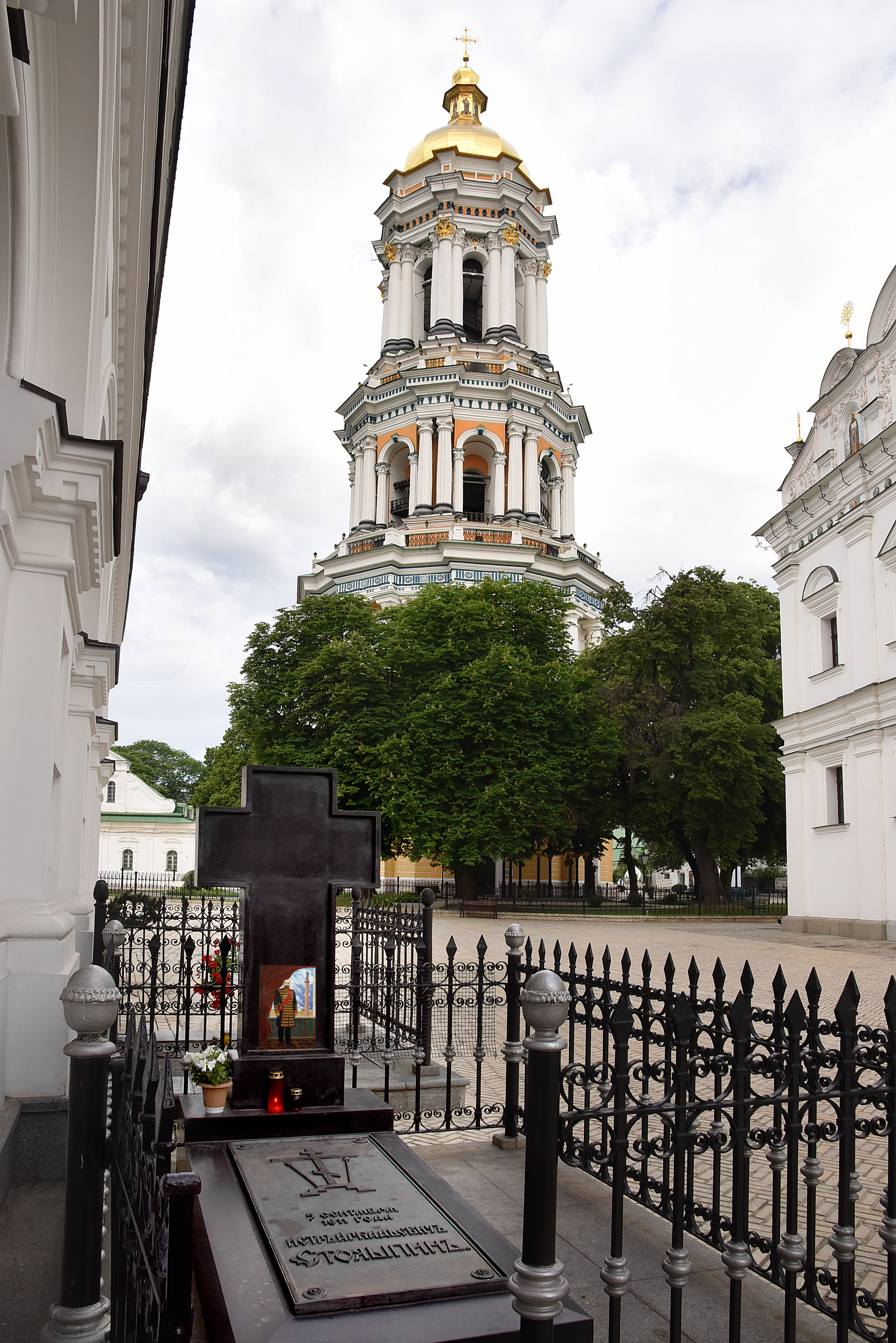
Pyotr Stolypin has been commemorated in various ways, particularly in Russia. A statue of Pyotr Stolypin once stood near the Kyiv City Duma building in Ukraine, the city where he was assassinated, but it was removed after the February Revolution of 1917. His grave is located in the Pechersk Lavra (Monastery) in Kyiv.
In more recent times, his legacy has seen renewed recognition in Russia. On December 27, 2012, a monument dedicated to Pyotr Stolypin was unveiled in Moscow to mark the 150th anniversary of his birth. This monument is prominently situated near the Russian White House, which serves as the seat of the Russian Cabinet. At the foot of the pedestal, a bronze plaque features a quote attributed to Stolypin: "We must all unite in defense of Russia, coordinate our efforts, our duties and our rights in order to maintain one of Russia's historic supreme rights - to be strong."
10. Portrayal in Popular Culture
Pyotr Stolypin has been depicted in several films and television series, illustrating his impact on Russian history.
He is portrayed by Eric Porter in the opening scenes of the 1971 British film Nicholas and Alexandra. In a fictionalized sequence, Stolypin is shown participating in the Romanov dynasty tercentenary celebrations of 1913, despite his actual assassination having occurred two years prior in 1911.
Stolypin also appears in episode 9, "Dress Rehearsal," of the 1974 British miniseries Fall of Eagles, where he is played by Frank Middlemass.
11. Related Topics
- Coup of June 1907
- Stolypin reform
- Russian Revolution of 1905
- October Manifesto
- State Duma (Russian Empire)